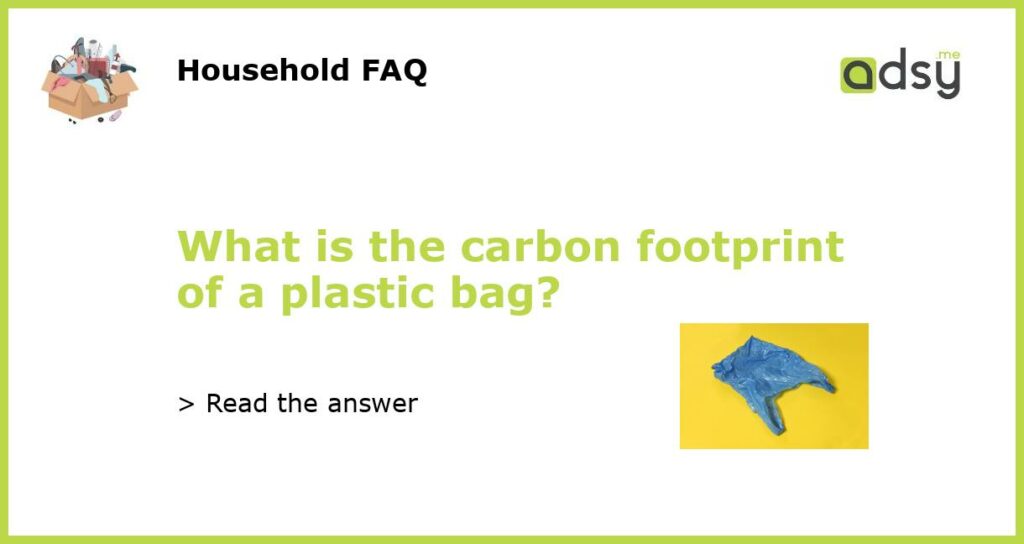What is the Carbon Footprint of a Plastic Bag?
Plastic bags are a convenient and widely used item in our everyday lives. Whether it’s for carrying groceries, storing items, or disposing of waste, plastic bags have become a staple in many households. However, the environmental impact of these bags is a growing concern, particularly in regards to their carbon footprint. The carbon footprint of a plastic bag is the amount of greenhouse gases emitted throughout its lifecycle, from production to disposal. Let’s take a closer look at the carbon footprint of a plastic bag and its implications.
The Production Process
The production of plastic bags involves the extraction and refinement of fossil fuels, mainly petroleum and natural gas. These fossil fuels are non-renewable resources and their extraction contributes to carbon emissions. Once the raw materials are obtained, they are converted into plastic pellets, which are then melted and molded into the shape of bags. This entire process requires energy and releases carbon dioxide (CO2) emissions into the atmosphere.
Transportation and Distribution
After production, plastic bags need to be transported and distributed to various retail outlets. This transportation process involves the use of vehicles, such as trucks or ships, which consume fossil fuels and release CO2 emissions. The carbon footprint of plastic bags further increases as they are transported over long distances to reach their final destinations.
Usage and Disposal
Once plastic bags are in use, their impact on the environment continues to grow. The majority of plastic bags are only used for a short period before being discarded. This leads to a continuous cycle of bag production and disposal. When plastic bags end up in landfills, they can take hundreds of years to decompose. As they break down, they release methane, a potent greenhouse gas. Methane is known to be significantly more harmful to the environment than CO2, contributing to climate change.
Alternatives to Plastic Bags
In recent years, there has been a push towards reducing the consumption of plastic bags and finding more sustainable alternatives. Reusable bags made of materials like canvas, jute, or recycled plastic have gained popularity as they can be used multiple times, reducing the need for single-use plastic bags. By opting for reusable bags, individuals can significantly reduce their carbon footprint and minimize the impact on the environment.
The Importance of Recycling
Another way to mitigate the carbon footprint of plastic bags is through recycling. Recycling plastic bags helps to reduce the demand for new plastic production, thereby reducing the associated carbon emissions. However, it’s important to note that not all plastic bags are recyclable, and the recycling process itself requires energy. It’s crucial to follow local recycling guidelines and properly separate and dispose of plastic bags to ensure they are recycled correctly.






